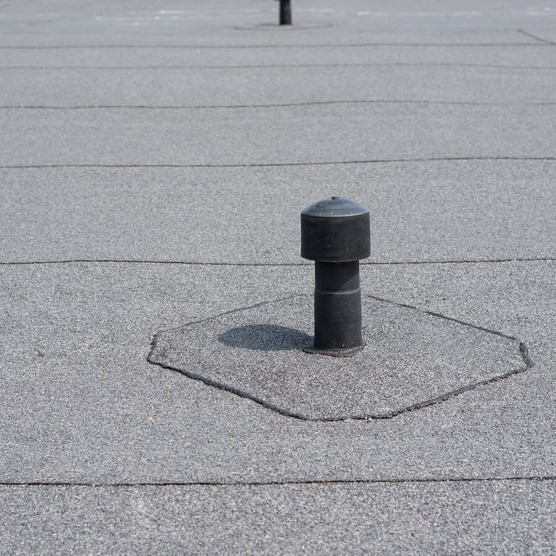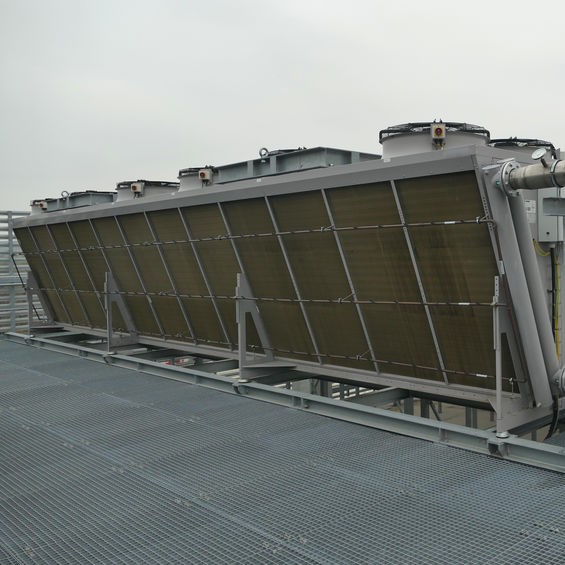
You’ve heard about epdm roof. What is it, though?
EPDM is short for ethylene propylene diene terpolymer, and the most common roof that EPDM roofing material is installed upon are flat or low sloped roofs. EPDM roofing is an exceedingly durable synthetic rubber membrane used primarily for roofing on commercial and industrial structures.
EPDM roofing membrane is sold is different thicknesses and widths in both black and white. Which color is used will depend on the climate the structure is located and the needs of the building owner and occupants. EPDM roofing is installed by three different methods:
- Fully adhered.
- Mechanically attached.
- Ballasted – the process of sealing the seams with a liquid adhesive or a formulated tape.
Is EPDM plastic or rubber?
The material used for EPDM roofing is a M-Class rubber according to ASTM standard D-1418, industry guidelines. The M class consist of elastomers with a saturated chain of the polyethylene type, with the M developing from the further correct term polymethylene.
For this article, we’ll be focused on this rubber material being used for EPDM roofing purpose, but there is a extensive range of other applications EPDM is used. Such as the rubber seal around the doors and windows of vehicles and the hoses under the hood of vehicles for the cooling system hoses. EPDM is also used in cold-rooms and as non-slip coatings for decks and playgrounds, along with many other applications.
Is EPDM roofing any good?
EPDM roofing is an extremely durable material that is algae and moss resistant which minimized damage. Repairing EPDM roofing is easy and inexpensive, and because it is installed in large roll out sheets, there are few seams, meaning less possible leaking.
Let’s discuss the differences between epdm roof vs tpo roofing. TPO roofing systems has come on the commercial roofing scene and holds credit for as much as 50% of the single-ply roofing market. TPO roofing (Thermoplastic Polyolefin) is a single-ply roofing membrane consisting of synthetics and reinforcing scrim.
TPO has energy efficiency regardless of the climate because it is light colored when the hot sun rays hit and turns dark when the weather is cold. It is a puncture resistant and can be installed adhesively, mechanically, or welded, even repairs can be welded.
EPDM roofing advantages are some of the reasons it is the chosen flat roof material over TPO:
- Inexpensive
- Lightweight
- Installed with adhesive, mechanically, or epdm roof with ballast, a popular choice.
- Durable
- Scratch and scuff resistant
- Works with adhesives, latex tape, liquid membrane and rubber shingles installed over it
- Strong resistant to UV rays
- Repairs easily with patches
Is EPDM better than felt?
EDPM roofing is the better choice over felt roofing for several reasons.
- EPMD is installed without hot torches or boiling tar, minimizing the risk of fire. Felt roofing is installed by bitumen boiler or torch.
- EPDM roofing is seamless roof and less likely to have leaking joints.
- EPDM roofing is durable, UV ray resistant, and has a 300% stretch before breaking, making it a watertight flat or low slope roofing material that is flexible in all weather conditions. Felt roofing becomes brittle with UV ray exposure, cracks in cold weather, an absorbent material, it doesn’t drain well, creating ponding and possible leaks.
- EPDM roofing is more expensive than felt roofing, but with a long lifespan, replacing the roof is years into the future where felt roofing will need frequent replacing. Felt roofing can develop a slow leak that goes unnoticed, creating structural damage until it is detected.
- EPDM is nonporous, making it resistant to algae and moss, still looking as good at 20 years old as it did when installed. An exceptionally low impact to the environment because it has a long lifespan versus TPO roofing having to be replaced every few years, adding to the landfills.
Can you put EPDM over felt?
With overboarding, yes, EPDM roofing can be installed over felt roofing with no problem.
It is recommended that any repairs be completed, and any rot removed before installing EPDM roofing material.

How long does a EPDM roof last?
With little maintenance and upkeep, EPDM roofing has been known to last over 50 years. With the new formulas used for manufacturing EPDM roofing materials, it has become practically invulnerable to radiation and damaging UV rays.
Is epdm roof with gravel necessary? Maybe, maybe not. Commercial roofing contractors use gravel on flat roofing jobs for two reasons:
- A layer of protection for the underlying layer
- To weigh down the roofing material
With a ballast roof, like EPDM roofing, gravel is applied primarily to weight the EPDM roofing membrane down, especially if it wasn’t installed with an adhesive. Ballast stones for EPDM roofing are one to two inches thick and a generous amount is applied on a built-up roof. This minimizes roofing application costs because it is quicker than the crew sealing the seams together. Need help with an EPDM roof installation in Dallas, TX? Call 214-373-1500 today.
